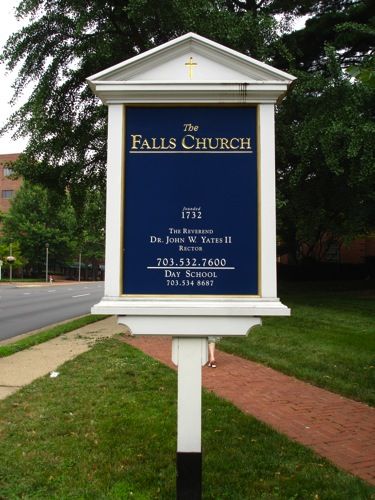Mass confusion
 Writing about Episcopalians befuddles journalists. Part of the conundrum, for anyone trying to cover one of the many property disputes and international realignments, is that the situation is so fluid that you really need a scorecard to keep track of all the players. While Washington Post writer Michelle Boorstein made a valiant attempt to impose order on the changeable scene, she sometimes sacrifices precision for clarity.
Writing about Episcopalians befuddles journalists. Part of the conundrum, for anyone trying to cover one of the many property disputes and international realignments, is that the situation is so fluid that you really need a scorecard to keep track of all the players. While Washington Post writer Michelle Boorstein made a valiant attempt to impose order on the changeable scene, she sometimes sacrifices precision for clarity.
The problem starts with her lede:
Five years after the consecration of an openly gay bishop, conservatives who have left the Episcopal Church have organized into a cohesive movement, creating a de facto, if small, separate Anglican church in the United States.
The first hint of an issue comes with Boorstein's use of the word "cohesive." As we see later in the story, that is a definite stretch.
Anglican? Well ... maybe. Part of the fight going on within the roughly 80 million-member communion is about who gets to define what "Anglican" is. Is it about coming under the jurisdiction of another Anglican bishop? Or is it about being recognized by the Archbishop of Canterbury or other governing bodies of the Anglican Communion?
Move down a few paragraphs, and we get to some of the really squishy issues.
The breakaway congregations, like dozens of others across the country, have voted to temporarily place themselves under more conservative branches of the Anglican Communion, mostly in Africa. After decades of being tiny, separate splinter groups, they have begun working together, have held their first summits with their overseas allies and are seeking recognition as their own U.S. church. They now comprise more than 580 congregations made up of more than 100,000 people, said Peter Frank, a spokesman for the new umbrella group, called Common Cause Partnership.
They say the Episcopal leadership defines Scripture on modern rather than eternal standards, and they take exception to the ordination of female clergy, the full acceptance of gays and lesbians and what they see as reduced importance in the role of Jesus for a believer's redemption. They are not alone in American Protestantism. Like-minded Presbyterians and Methodists are leaving their denominations in what church-state expert Robert Tuttle says is the largest wave of congregation withdrawals in more than 30 years.
The Common Cause Partnership is indeed an umbrella group. The group includes the Reformed Episcopal Church, a denomination that broke away from the Episcopal Church more than a century ago. It also includes churches that probably aren't aspiring to be recognized by the Archbishop of Canterbury -- or even under the authority of an African bishop.
What are "modern standards" and "eternal standards" of scriptural interpetation? As often happens, some definition of these terms -- and voices on the opposing side who might contest this definition -- might have helped put this in context.
And to say that Common Cause members don't favor ordaining women simply isn't accurate -- some do.
Otherwise, Boorstein's story offers a useful snapshot of a very volatile situation.
Even we Episcopal "insiders" can't always keep score.
Image: The Falls Church, which is part of the Anglican District of Virginia, is the subject of a new strategy by the Episcopal Diocese of Virginia, which Julia Duin covered ably for The Washington Times.